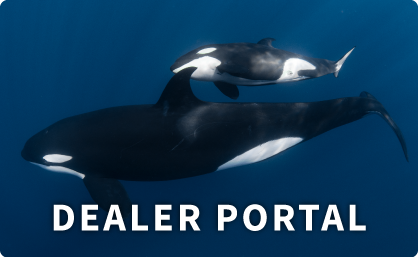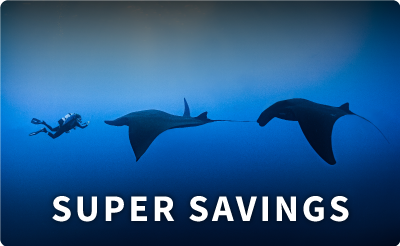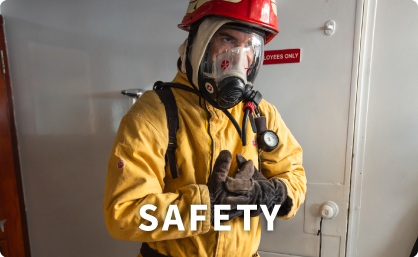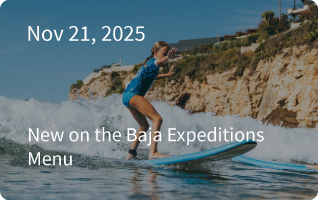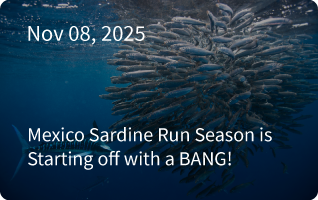We spent one day and one night crossing open ocean. Some people worry that sleeping in a small bunk on a rolling ship with the engines churning all night might be hard. For me though, its like being rocked in a cradle, and the engines basically seems like no noise to your brain. I really do sleep like a baby on boats.
We woke with the Revillagigedo Island of San Benedicto in sight. A beautiful, dry, volcanic island that rises straight up from deep water. The Revillagigedos (pronounced ray-vee-yah-hee-hay-dos) are part of a very tectonically active part of the world, where three oceanic plates are colliding into one another, creating deep sea vents, and pushing up islands from very deep water. The Galapagos Island are made in much the same way. San Benedicto is so active, it actually erupted (blew up) in 1952 – not very long ago!!
The Revillagigedos are really three main islands (uninhabited except for a Mexican Naval base on Socorro Island): San Benedicto, Clarion and Socorro, and a tiny Islet called Roca Partida (where we hope to dive on our way back from Clipperton). The closest island is about 1,700 miles round trip from San Diego! Since they are remote, unfortunately, they are also a favorite destination for illegal fishing, including shark fining – a terrible practice where sharks are caught and their fins are cut off for sale as shark fin soup. The sharks, often still alive, are tossed overboard to die slowly after their fins are cut off. This is one of the most destructive fishing practices in the world, and is driving down shark populations all over the globe. This is very important because sharks are top predators‚ meaning very few things eat them. When top predators go, it throws the ecosystem off balance.
San Benedicto, where we did our first dive, is about 220 miles south of Cabo San Lucas. We did our dives at a place called the boiler. It is big rock that goes from about 12 feet deep to about 150 feet. Because it comes up so steeply, it creates currents that concentrate things like krill and small plankton. This attracts giants like the big Manta rays that feed on krill. It also attracts lots of fish, birds, and even sharks. It is a biosphere reserve, off limits to fishing and protected from extractive activities. To do work there, and to take any specimens, we need special permits, and we also have to have a Mexican partner, and a Mexican scientist with us on board (we have Mauricio Hoyos with us, he’s the one studying sharks).
No tags. No Galapagos. 5 white tip sharks (3-4 feet), one scalloped hammerhead shark 4 feet (80 feet – too deep to go chasing after it) small. Saw one broken receiver from a different project. Buoy was broken. Couldn’t fix it.
Jeff is the equivalent of an underwater Indiana Jones. Seriously. He straps an unbelievable amount of equipment to his body (most of it is safety equipment for life support, and some is sampling equipment so he can collect specimens – then there’s the camera to document stuff). Jeff has been a pioneering cave diver, exploring and discovering underwater cave systems, and finding new species of organisms never before known to science. Some of his caves were so remote in the jungle (he discovered several in Central America) that he had to hire ponies to carry him and his gear through the jungle to these small ponds which turned out to be entrances to extensive underground water filled caves. Some even had archeological artifacts from Mayan communities living near-by hundreds and even thousands of years ago. These days Jeff often uses what are called closed circuit re-breathers – a type of underwater life support system that allows him to go much deeper than a regular scuba tank. In this way he can explore places deeper than most people can dive. The twilight zone.
What we saw/learned today:
The surge (caused by big swells) was pretty strong, and every time we stopped to look at fish, a surge would come and literally pull you off the wall. Holding on is super hard, like you might imagine hanging from a cliff from your finger tips. We were easily pulled off and tumbled around a bit. It made careful close photography difficult. But there are some professional photographers who still got amazing pictures. Next time you see those beautiful pictures on animal planet or in a animal magazine-realize how hard it is to get those pictures!
We saw one really big Manta Ray, but it was too deep for us to get close to. These are such magnificent animals, and actually have very large brains. They feed on small animals like krill, but seem to have quite complex behavior patterns, including interacting with divers. Some will approach divers, and seem to like to have their bellies gently rubbed – can you imagine rubbing the belly of a huge manta ray whose size literally blocks out the sunlight from above, like having a small car parked above you?
We saw lots of clarion angelfish, a beautiful orange angelfish. It is closely related to the Clipperton Angelfish, and one of the fish we came here to study. We hope to get fin clips for some DNA studies on our way back, we’ll see. I saw a large moray eel. They usually stay sort of hidden, inside cracks. This one was swimming around though. It stopped on a ledge. As soon as it stopped swimming, a much smaller clarion angelfish approached the head of the moray (which had loads of very sharp sticking out of it), turned to put its tail fin right in the Moray’s face, and proceeded to twitch and shake. It definitely seemed like a signal, or communication of some sort. So cool! I got some video of it. Then, after a few spastic body twitches by the clarion angelfish, a flag Cabrilla (type of grouper) arrived. Much bigger than the clarion angelfish, but not as big as the grouper. It physically and sort of rudely pushed the clarion off the ledge, and proceeded to sit right in front of the face of the Moray. Through all this, the moray seemed to just sit there and let the two other fish work it out. It was very much as if the clarion and flag cabrilla were competing to be near the moray. Odd behavior and I don’t know why they may have done that. I’ll have to look into it when I get back and ask my friends who know about fish behavior.
We did two amazing dives at San Benedicto. The water was full of krill, small jellyfish and ctenophores – all signs that the water here is productive – lots of nutrients to support a rich food web, and lots of organisms.
After the dives we pulled anchor and steamed to Socorro Island where there is a naval base. We need to pass customs at the naval base since we will then be leaving Mexican waters, on our way to Clipperton, which is owned by France. That is a whole story itself.
After customs we set out across the ocean blue for the tiny Atoll of Clipperton. Blue, blue, blue. No one else out here. Wind is blowing a steady 10-15 knots from the northeast, fresh whitecaps, 5-8 foot swells. Some spotted dolphins, lots of flying fish, a few booby birds. The birds too will soon be gone until we get closer to Clipperton. We head 170 degrees, almost due south.
Here are: notes from Jeff Bozanic all about his technical diving, and a section on what rebreathers are and how to use them – this is the stuff of exploring at the edge!
I set the alarm for 6:00 am, so that I could get some work done before we arrived on station at San Benedicto Island. I needed to label some specimen bags for the dives today. I also wanted to get caught up on writing some notes, and add clips to hammers and fish baskets for later use under water.
Nicole and I spent some time talking to Sten (the lead divemaster) and Mauricio, the Mexican researcher aboard. We were concerned about collecting in Mexican waters. Both Nicole and I have permits for Clipperton, but Clipperton belongs to France. Our French permits do not allow us to collect in the Revillagigedo Islands, which belong to Mexico. Mauricio has permits, but his permits only allow for the tagging and tracking of sharks. We discussed how we might be able to piggy-back our work on his permit, but in the end decided that we would just have to forego collecting on this part of the trip, and try to obtain permission for the return journey.
In a way, it is pretty frustrating. All we wanted to do for Nicole’s research was to collect 20-50 angelfish, cut a small part of fin off each with a pair of scissors, and return them live to the water. Their fins would heal, and Nicole and her team would have the tissues they need to provide valuable information back to the Mexican government.
Unfortunately, many people do not respect local laws and regulations. Commercial fishermen come in and using nets kill thousands of angelfish and other reef fish annually. They do not even want these fish, but kill them while trying to catch the fish they really want to sell. The commercial aquarium trade collectors sneak in and collect hundreds of live angelfish, selling them to private collectors who do not care about regulations for sometimes several thousand dollars each.
We would have planned this better, however we did not know that Mauricio would be on the trip. Mexican regulations for conducting science in their waters demands that a Mexican national who is also a scientist accompany the cruise, and directly oversee all such work. Unfortunately, Mauricio was confirmed as a participant on this voyage at the last minute, and that did not allow us time to interface and set things up.
The reality is, we probably could have collected the fish, sampled them, and released them unharmed, with nobody the wiser. However, in a moral sense that would have made us just as guilty as the poachers who come in and ravage the waters by stealing fish without permission. From our perspective, it is better to wait, and conduct our studies according to the letter of the law, abiding as well to the intent of the regulations.
So instead of collecting on these first two dives, I used the time to look for basket stars for future reference, check out my diving equipment, and practice with my camera. I did two dives, at a location called The Boiler. Normally there are many manta rays here, but today I did not see any. I did see a few small (three foot long) white tip sharks, but not much else. On the bottom at about 135 feet deep, I found a transceiver and buoy that were being used to collect shark migration data, but the buoy had sunk to the bottom, making the transceiver inoperable. I took a few photographs of it to give to Mauricio to send to his colleague, Dr. Benson.
I had a problem with one of the oxygen sensors on my rebreather. It was reading too high, and would need replacement. It is one of the things I will attend to in the next day or two.
After the dives, we steamed from San Benedicto Island to Socorro Island. The Mexcian government maintains a naval base there. We had to check in with the authorities there, and immediately check out again, as we would be leaving Mexican waters for the French territory of Clipperton Island. Formalities took about an hour, and then we were on our way.
Empty ocean. No coastline. No islands. Probably no other vessels. Ample time to further prepare, get caught up on log notes, sleep, read, watch movies, and generally relax. I have chores to do: Clean my rebreather, fix my rebreather sensors, fill cylinders with trimix (more on that later), label collection bags, prepare my field notebook, and finish a report which will be due when I arrive back from the expedition.
But, no work for me tonight! Instead, I watched the movie Sherlock Holmes with the other expedition members.
What is a rebreather?
By Jeffrey Bozanic
Normal scuba is an open circuit system. Combining a high pressure cylinder and a demand regulator, you inhale gas at ambient pressure (the pressure around you), use a little of the oxygen in the gas, and exhale. When you exhale the gas, it bubbles to the surface, carrying as much as 98% of the original oxygen it contained. The open circuit comes from the fact that the exhaled gas is released on every breath. This is the type of equipment you usually see on television, being used by Jacques Cousteau and others.
A rebreather recirculates the gas a diver is breathing, allowing the diver to breath the same gas over and over again. Thus, there are normally no or very few bubbles. The system removes the carbon dioxide generated by human metabolism, and adds oxygen and other gases to make up what is consumed. Because the gas is breathed over and over again, instead of being thrown away with every breath, a diver can remain underwater far longer on much less gas. In fact, for some dives, rebreathers can be as much as fifty times more efficient on gas consumption than standard scuba.
There are three major types of rebreathers. Each has different advantages and disadvantages, and each requires a different type and degree of training. The three classes of rebreathers are: (1) oxygen, (2) semi-closed circuit, and (3) mixed gas closed circuit.
Oxygen rebreathers are the simplest and least expensive rebreathers. As the name implies, the breathing gas is 100% oxygen. Because of this, the diver incurs no decompression obligation, as there is no inert gas. However, the maximum depth to which the units may be used is 20 feet of sea water (fsw), because of oxygen toxicity. You may not know this, but oxygen is actually poisonous if you breathe too much of it, and it can kill you. Oxygen rebreathers are completely bubble free, so long as the diver maintains a given depth, or ascends slowly enough to metabolize oxygen by volume to counter gas expansion due to the ascent.
To allow divers to travel deeper an inert gas must be added to the breathing mix. The air we normally breathe on the surface is mostly made of an inert gas called nitrogen. We need some oxygen to stay alive, but we also need the nitrogen to reduce the toxic effects of pure oxygen. About 78% of air is actually nitrogen, 21% of air is oxygen, and 1% are other trace gases like argon and water vapor.
Semi-closed rebreathers (SCR) typically utilize some type of enriched air nitrox (EANx) as the base gas, which is an oxygen-nitrogen mixture containing more oxygen than air. The gas may recirculate through the breathing circuit several times, but a key feature of SCRs is that a portion of the gas is either continually dumped at a constant rate (constant mass flow), or a portion of every breath is exhausted (respiratory minute volume keyed). These systems allow divers to dive to depths of generally about 130 fsw, and are more efficient than open circuit scuba. However, this is not deep enough for the work I will be doing on Clipperton Island, so I cannot use this type of rebreather.
Mixed gas closed circuit rebreathers (CCR) recirculate all of the gas the diver is breathing. Oxygen from an oxygen cylinder is added to replace that which is metabolically utilized by the diver. As the diver descends, a diluent gas, typically air or trimix, is added to maintain the proper breathing volume. Oxygen sensors monitor the oxygen levels, allowing the diver to stay within safe limits. I am using a Titan CCR, which is computer controlled, automatically adding oxygen as necessary, and also incorporates a dive computer to calculate inert gas status of the diver. http://www.titandivegear.com/” www.titandivegear.com]
With rebreathers, bigger does not necessarily mean better. As with any piece of equipment, the user must determine what the desired objective is, and select the gear accordingly. This is especially true with rebreathers, where the difference between units may involve a difference in 40-50 hours of training, and a price differential of over $20,000. In fact, for many objectives, traditional open circuit scuba is still the system of choice. Thus, on this expedition Nicole is using standard open circuit scuba, and I am using a mixed gas closed circuit renreather. Each tool allows us to accomplish our particular research objectives with the simplest and least expensive equipment possible.


